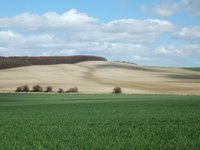 The Ridgeway is one of the many long distance footpaths in Britain. We explored a small section of it in glorious sunshine, the day before the south was once again unseasonably covered in snow.
The Ridgeway is one of the many long distance footpaths in Britain. We explored a small section of it in glorious sunshine, the day before the south was once again unseasonably covered in snow.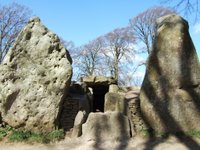 Typical vistas are of large fields and a gently rolling landscape. Along the way we came across one of many burial barrows in the UK, Waylands Smithy. This one had already been looted when excavated in 1920. Further along the Ridgeway was one of the most stylised White Horses we've seen here. They also date from 1000BC and are stunning on the green hills, the shape revealing the horse in the white chalk beneath.
Typical vistas are of large fields and a gently rolling landscape. Along the way we came across one of many burial barrows in the UK, Waylands Smithy. This one had already been looted when excavated in 1920. Further along the Ridgeway was one of the most stylised White Horses we've seen here. They also date from 1000BC and are stunning on the green hills, the shape revealing the horse in the white chalk beneath.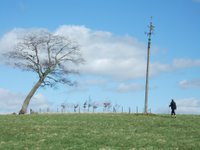 For the Kiwis, we found a replacement tree and obelisk for One Tree Hill!
For the Kiwis, we found a replacement tree and obelisk for One Tree Hill!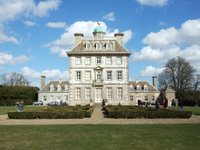 The walk also included Ashdown House, built 1663 in a Dutch style for a sister of Charles I. The house contains her collection of family portraits. The amazing feature of the house is the huge wooden staircase that occupies 25% of the floor area of the building.
The walk also included Ashdown House, built 1663 in a Dutch style for a sister of Charles I. The house contains her collection of family portraits. The amazing feature of the house is the huge wooden staircase that occupies 25% of the floor area of the building.In spite of the recent discovery of bird-flu in the swan up north, we dined in the Swan down south. The staff at our accommodation made the recommendation, not difficult in a country teeming with picturesque pubs serving tasty food.
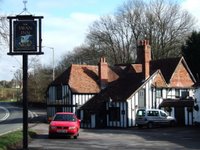
The Sunday weather forecast was for rain mid-afternoon, so we set out for a morning walk to beat the weather. The walk included several small Berkshire villages. We lunched at the final village - Brimpton Common in a pub called The Pineapple. Unlike our understanding of pineapples these days, the name refers to the fruit of a pine tree, which we know as a pine- cone. When pineapples did arrive here, they were exotic and only enjoyed by the rich. Not likely to be served at a pub.
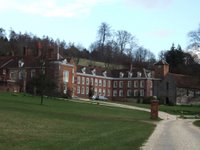 We decided the rain wasn't about to arrive for a while and drove in lovely sunshine to look at Stonor House. By the time we parked, the sky had darkened & we just made it inside before the hail made it extremely cold and unpleasant. The house had an interesting history, as they all do! We saw a priest hole where, during the reign of Elizabeth I, a printing press was secreted in the roof space to publish Catholic literature. The printer was Edmund Campion: captured in 1581; sent to the Tower; tried then hung, drawn & quartered (nasty habit they had). In 1970 the Catholic Church made him a saint.
We decided the rain wasn't about to arrive for a while and drove in lovely sunshine to look at Stonor House. By the time we parked, the sky had darkened & we just made it inside before the hail made it extremely cold and unpleasant. The house had an interesting history, as they all do! We saw a priest hole where, during the reign of Elizabeth I, a printing press was secreted in the roof space to publish Catholic literature. The printer was Edmund Campion: captured in 1581; sent to the Tower; tried then hung, drawn & quartered (nasty habit they had). In 1970 the Catholic Church made him a saint.




No comments:
Post a Comment